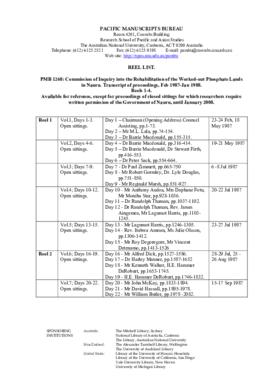Diary, miscellaneous papers and correspondence
- AU PMB MS 497
- Collection
- 1900 - 1951
Ellis (1869-1951) was born in Queensland and educated in New Zealand. In the 1890s he became an employee of the Pacific Islands Company Ltd of London, which was involved in the guano industry on islands in the Coral Sea and the Phoenix Group (Kiribati). In 1900, he became curious about a rock which was used as a doorstop in the Sydney office of his company and this led to the discovery of the phosphate deposits on Ocean Island and Nauru. He was a prominent figure in the Pacific Phosphate Company Ltd in 1902. After the phosphate company was bought out by the British, Australian and New Zealand governments after World War I, he became commissioner for New Zealand on the British Phosphate Commission, which was established to exploit the phosphate deposits on Ocean Island and Nauru. He was the author of three books, Ocean Island and Nauru (1936), Adventuring in Coral Seas (1937) and Mid-Pacific Outpost (1946).
The documents on the microfilm include: 1. Ellis' diary for May 1900 when he went to Banaba (Ocean Island) in Kiribati to establish the phosphate industry there; 2. Clippings on the phosphate industry from various newspapers and journals; 3. Correspondence covering the period 1920-51.
Ellis, Albert Fuller





